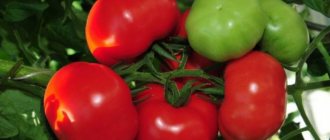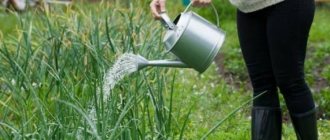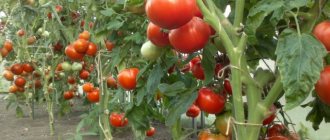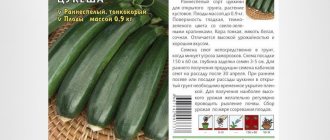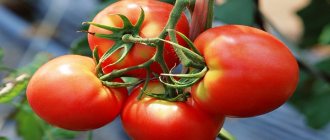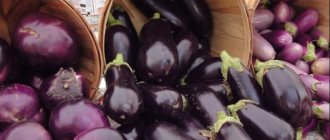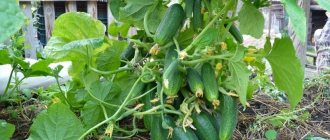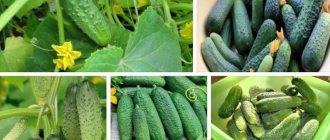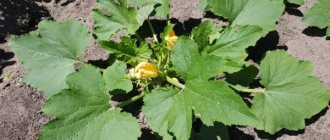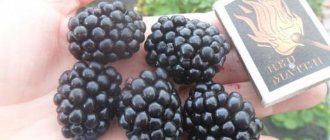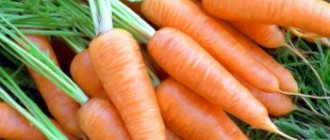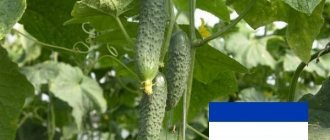Tomatoes of Dutch selection are popular among Russian summer residents due to their disease resistance and high commercial properties. The choice of seeds is huge, but in most regions of the country, mainly super-early Dutch tomatoes are cultivated in greenhouses. They manage to produce a harvest and ripen on the bushes before the onset of cold weather, which is important in a temperate climate. Fruits ripened in greenhouses are smooth and suitable for storage and transportation. The taste may not be as rich as traditional varieties, but the hybrids have excellent yields and early fruit harvest.
Lady Shady F1
A very early hybrid of the first generation from the category of determinate tomatoes. Tasty, quite unpretentious and productive.
Tomato Features:
- plant height – up to 60-80 cm;
- medium foliage;
- formation in two trunks;
- brushes of 3-4 tomatoes;
- heat resistance.
The tomatoes are bright red in color and each weigh approximately 130-200 grams. Inside there are many chambers, the flesh is juicy, fleshy, and when cut, it is sugary. Use – salads, preparation of sauces, juice, purees, pastes.
You may be interested in:
When can you pick tomatoes in the regions to ripen faster? Growing tomatoes in greenhouse conditions allows you to get a harvest under any climatic conditions. Ripening on…Read more…
Medium-fruited tomatoes
Tomatoes with a fruit size of 100-130 g are usually very productive and versatile, which is why they have earned popularity.
Corleone
Especially popular in central Russia. It is grown mainly under film, but the option of open ground is not excluded.
It gained popularity due to its ability to produce high yields. The tomatoes are ovoid in shape, the pulp is juicy, and weighs 130 g.
Phizuma
In fact, it is not susceptible to diseases; the only problem may be pests, from which no variety has immunity.
Designed for growing in greenhouse conditions. The harvest from 1 sq/m is large, 40 kg. Tomatoes are round, red. One weight is 140 g.
Esmira F1
Resistant to most traditional diseases, this tomato will delight you with an early harvest and delicious tomatoes. 5-6 kg are collected from a bush. The taste is pleasant, you can feel the sweetness and very slight sourness.
The plant reaches 2 meters in greenhouses, is characterized by a short distance between internodes and small leaf blades.
On a note!
It is recommended to form the bush into one trunk.
The originator of the hybrid is Rijk Zwaan from Rotterdam. The tomato is positioned as a hybrid for greenhouses and shows good set in unfavorable and stressful growing conditions.
Varieties of varieties depending on ripening period
Breeders have bred and continue to create tomatoes whose fruits will not ripen at the same time. The first tomatoes are harvested 2 months after the sprouts appear, the last ones in the fall.
Early ripening
Summer residents usually allocate at least a little space to plant hybrids that will quickly ripen. Early tomatoes are not entirely suitable for canning and pickling and are consumed immediately.
Big Beef F1
The hybrid, bred in the Netherlands, has taken root in various regions of Russia. Indeterminate tomato shoots are tied to a trellis. Tomatoes are planted in clusters of 5 and ripen in 100 days.
The fruits are large in size, weighing more than 200 g, the weight of individual specimens approaches 800–1000 grams. Tomatoes are covered with smooth skin; when cut open, the juicy pulp reveals 6 chambers with seeds.
The variety tolerates low temperatures well. From the bush they collect up to a bucket of aromatic tomatoes, from which they squeeze the juice and make a sauce.
Solerosso F1
The hybrid was introduced to the market by the well-known company Nunhems, and has been included in the State Register of the Russian Federation since 2006. Main characteristics:
- tomato from the group of determinate species;
- early (90 days);
- the yield is higher when cultivated in shelters, indicators are 7-8 kg per square meter;
- excellent taste;
- keeping quality of fruits.
The main purpose is processing into juices, pastes, purees. The thin skin does not burst in marinades, so you can use the fruits for assorted dishes.
Donald F1
The fruits of this early tomato look like small, aligned balls of bright red color. They weigh 50-60 grams, have a good taste and dense pulp.
The hybrid is short, the bushes barely reach half a meter in height. It performed well when planted in tunnels and under arches with film on ridges. It does not require pinching, so it is recommended for beginning gardeners.
On a note!
The “strong” side of the hybrid is its high resistance to fusarium and nematode.
The fruits are used for whole canning. They are well transported and can be stored for a long time (up to two months).
Tomato
Vegetables >>>
Vegetable anise
Watermelon
Vegetable basil
Eggplant
Vegetable beans
Swede
Vegetable peas
Salad mustard
Daikon
Thin-leaved two-row
Melon
Strawberries
Hyssop officinalis
Zucchini
Cabbage
Chervil
Strawberry
Coriander
Corn
Onion
Chard
Carrot
Cucumber
Parsnip
Patison
Pepper
Parsley
Rhubarb
Radish
Radish
Turnip
Salad
Beet
Celery
Thyme
Tomato
Turnips
Pumpkin
Dill
Beans
Fennel
Garlic
Spinach
Sorrel
Grape
Lilac
garden tools
Spruce
Flowers >>>
Ageratum
Aquilegia
Acroclinum
Alyssum
Amaranth
Pansies
Arabis
Aster
Aubrecia
Balsam
Marigold
Cornflower
Verbena hybrid
Matron's Party
Viscaria
Convolvulus
climbing plants
Gaillardia
Carnation
Helichrysum
Dahlia
Hyacinth beans
Gypsophila graceful
Godetia
Gomphrena
Gravilate Chilean
Ornamental grasses
Delphinium
Dimorphotheca
Datura broom
Sweet pea
Iberis umbellata
morning glory
Calendula
Decorative cabbage
Clarkia graceful
Cleome
Gibson castor bean
Kobeya climbing
Bell
Coreopsis
Cosmea
Cosmidium
Decorative corn
Lavender angustifolia
Lavatera
Lagenaria
Lakfiol
Bloodroot
Levkoy
Linen
Lychnis
Lobelia
Lunaria
Snapdragon
Lupine
Malopa
Mallow zebrina
Daisy
Matthiola bicornuum
Mesembryanthemum
small petals
Mimosa
Mirabilis
Spurge
Monarda hybrid
Mordovnik
Digitalis
Nasturtium
Forget-me-not garden
Nemophila
Nivyanik large
Nigella Damascus
Decorative pepper
Perilla
Petunia
Pyrethrum
Sunflower
Purslane
Primula stemless
Ratibida columnar
Mignonette fragrant
Salvia sparkling
Feverweed
Scabious
Statica
Tobacco
Tithonia
Tritoma berry
Thunbergia winged
Decorative pumpkin
Yarrow
Climbing beans
Phacelia bell-shaped
Horned violet
Physalis Franche
Phlox
Chrysanthemum
Celosia pinnate
Cineraria
Zinnia
China
Sage
Rose stock
Eschszolzia
Annuals >>>
Ageratum
Acroclinum
Alyssum
Amaranth
Pansies
Aster
Balsam
Marigold
Cornflower
Verbena hybrid
Matron's Party
Viscaria
Convolvulus
climbing plants
Gaillardia
Helichrysum
Dahlia
Hyacinth beans
Gypsophila graceful
Godetia
Gomphrena
Delphinium
Dimorphotheca
Sweet pea
Iberis umbellata
morning glory
Calendula
Decorative cabbage
Clarkia graceful
Cleome
Gibson castor bean
Kobeya climbing
Coreopsis
Cosmea
Cosmidium
Decorative corn
Lavatera
Lagenaria
Levkoy
Lobelia
Lunaria
Malopa
Mallow zebrina
Matthiola bicornuum
Mesembryanthemum
Monarda hybrid
Mordovnik
Digitalis
Nasturtium
Forget-me-not garden
Nemophila
Nigella Damascus
Decorative pepper
Perilla
Petunia
Sunflower
Purslane
Scabious
Statica
Tobacco
Tithonia
Tritoma berry
Thunbergia winged
Decorative pumpkin
Phacelia bell-shaped
Physalis Franche
Phlox
Chrysanthemum
Celosia pinnate
Cineraria
Zinnia
Rose stock
Eschszolzia
Perennial >>>
Aquilegia
Arabis
Aubrecia
Gravilate Chilean
Ornamental grasses
Datura broom
Bell
Lavender angustifolia
Bloodroot
Linen
Lychnis
Snapdragon
Lupine
Daisy
small petals
Mimosa
Mirabilis
Spurge
Nivyanik large
Pyrethrum
Primula stemless
Ratibida columnar
Mignonette fragrant
Salvia sparkling
Feverweed
Yarrow
Climbing beans
Horned violet
China
Sage
Biennial >>>
Carnation
Lakfiol
Order by table
Colored bags
Promotion >>>
Sale
We are on social media networks:
News:
February 6, 2021
Minimum order - 600 rubles!
Attention! Free delivery (except for regions, with air shipment)
If the order is more than 600 rubles, delivery will also be free!
Order seeds - pay upon receipt! Save 10% when paying by card!
Our company sells not only bagged seeds, but also wholesale seeds by weight. We ship wholesale from 25 grams of one item. If necessary, we can pack the seeds in bags. Request a call
We have been developing and promoting turnkey websites for 10 years now; consultation is free by calling the campaign: 8-919-346-8031.
Magnus F1
The hybrid is presented on the market by the agricultural corporation Monsanto (Holland) and is included in the catalogs of the State Register of the Russian Federation.
Those who grew tomatoes of Dutch selection note:
- early ripening of tomatoes (88-90 days);
- high rates of fruit collection (up to 14-16 kg/sq. meter);
- resistance to most tomato diseases, “elimination” from late blight;
- fruit resistance to cracking.
You may be interested in:
Proper care of tomatoes in a greenhouse: excellent harvest. In our climate, it is most convenient to grow tomatoes in a greenhouse. To obtain high yields, the scheme...Read more...
On powerful densely leafy bushes, 6-7 brushes are formed. The fruits have a high density of pulp; there is slight ribbing on the skin. The color is red, each weighs approximately 120-140 grams.
The taste is pleasant, with a characteristic aroma. The tomato is universal, but more often due to its early ripening period it is used in summer salads.
For greenhouses
Holland is a country where most of the territories are located below sea level. The literally titanic work of the residents of the state made it possible to transform the swampy central spaces into lands suitable for agricultural activities. And the country’s climate is quite harsh, the average temperature in July is only 17 degrees. That is why Dutch breeders have created many varieties of vegetable crops for greenhouses of varying degrees of protection.
See also
Review of the best varieties of tomatoes for the Vitebsk regionRead
Tomato varieties for greenhouses are designed for the spring-summer period and as an extended rotation crop. In most cases, they are adapted to conditions of low light and low temperatures. You can select Dutch varieties of tomatoes for greenhouses of any category. Plants are resistant to most diseases and pests that are most often found in protected soil conditions. This is a whole category of tall, intensive hybrids with a short period of fruit ripening.
Belfast F1
An ultra-early hybrid, adapted to conditions of low light and low temperatures, like most Dutch tomatoes for greenhouses. The variety is recommended for cultivation in all types of greenhouses. It is distinguished by good tomato set and very early ripening of fruits on the first clusters. It produces a stable harvest even under stressful conditions and has high disease resistance. The tomatoes are large, weighing 220-300 g, round, red in color, aligned, dense, with excellent transportability. The seed producer is Enza Zaden, the Netherlands.
Sakura F1
An early-ripening hybrid variety for greenhouses, grows well in conditions with insufficient light and low temperatures. An open bush with large, well-branched racemes. The variety stably sets fruit and is resistant to a number of diseases, including nematodes. The tomatoes are small in size, weighing 15-20 g, red, round in shape. The fruits have exceptional taste, very sweet, with dense, juicy pulp. Manufacturer: Enza Zaden, Netherlands.
Aksai F1
A hybrid variety with a ripening period of up to 100 days, for film summer greenhouses. With a semi-determinate type of open bush, with short internodes. At the same time, several clusters are tied and ripen on the bush at once. The variety is resistant to nematodes, TMV, fusarium, and verticillium. The fruits are large, 140-180 g, round in shape, red. Tomatoes, uniform in size, with good transportability, shelf life. The taste is excellent. Manufacturer: Nunhems, Holland.
Panekra F1
Hybrid variety for film greenhouses. The plant is powerful. Forms up to 15 clusters with 4-6 fruits during the growing season. The variety demonstrates high productivity. The fruits are large, reaching a weight of 450 g on the first clusters, an average weight of 260-300 g. The tomatoes are round-flattened, with ribs, and red in color. The pulp is juicy and has excellent taste. Tomatoes are not prone to cracking and are transportable. Manufacturer: Syngenta, Netherlands.
Dealers offer Dutch tomato seeds for greenhouses, taking into account growing methods. After all, even inexperienced gardeners and gardeners know the technology of growing plants without using land, invented by the inventive Dutch. The soil is replaced with a material that retains moisture well.
It is quite difficult to create ideal conditions for plants in a regular garden greenhouse. It is necessary to select tomato seeds that are most suitable for local conditions. Basically, quite expensive seeds of Dutch hybrid varieties of tomatoes are presented on the Russian market. The high cost pays off with large volumes and high-quality care, giving very high yields.
Tiara F1
Another early tomato from the “Dutch” group, the fruits of which are very tasty when preserved. The bush grows up to one and a half meters and needs supports and garter. The usual practice is to form the plant into 2-3 trunks.
Tomatoes are round, smooth, with a small “spout”, weighing up to 200 grams. The skin and pulp are dense, bright red. Hybrids have a standard taste, but this tomato is distinguished by its sweetness.
Feature of the variety: long fruiting, so tomatoes are harvested until autumn. Withstands transportation well and is stored for a long time. Little susceptible to disease. In terms of productivity, it surpasses many other hybrids, yielding up to 18 kg per square meter with proper care.
Dutch seeds: determinate varieties of tomatoes for open ground
Benito
You can make good money selling these tomatoes. Firstly, their yield can reach 26 kg per 1 m², which is much higher than average. Secondly, the beautiful medium-sized plum-shaped fruits are elastic enough to withstand transportation and long-term storage without deformation. They are successfully used for whole-fruit canning. A 70-centimeter plant needs to be tied to a support.
Sultan
By growing tomatoes of the Sultan variety, you can get up to 15 kg from 1 m² of rounded fruits, the average weight of one of which is 150 g. The advantage of 60-centimeter tomato bushes of this variety is that there is no need to control the formation of stepsons.
Tanya
The Tanya tomato variety can be identified by the special power of the stem and branches, as well as significant foliage. The bush develops well not only in open ground. You can do without tying and pinching and get 4-5 kg from one plant. Round fruits up to 170 g are universal in use and are perfectly stored.
Tomatoes for open ground Tanya are universal in use
Yaks
A tomato variety used for whole-fruit canning and paste preparation. Plum-shaped fruits weighing about 100 g can be harvested up to 7 kg from 1 m². The bush is low-growing, powerful, and does not require pinching or excessive care.
Polfast
Flat-round fruits weighing from 100 to 150 g are used for absolutely any purpose. They can collect about 6 kg per unit area. The plant is a low bush (up to 60 cm).
Polbig
A determinate variety for open ground and beyond, which distinguishes itself among other hybrids of Dutch breeders for its cold resistance. The rather large fruits (180-200 g) are mainly consumed fresh. Having purchased seeds of this variety, you need to think about the support and prepare for regular pinching (up to the 1st cluster).
Dutch breeders endowed the Polbig tomato with cold resistance
Classic F1
For lovers of canned and pickled tomatoes, we recommend the Classic hybrid. Its fruits are elongated, dense, resembling cylinders of regular shape.
The plants are compact, do not exceed a meter in height, and are densely leafy. The brushes begin to “knit” after the 7th leaf, then the inflorescences go through the leaf.
Since during the fruiting period the bush is overloaded with tomatoes, not only the shoots, but also the brushes are tied up. From one small bush, 3-4 kg of tasty fruits are collected. The tomatoes are bright red, with glossy skin and dense flesh.
Universal use:
- salads;
- slicing;
- conservation;
- pickling;
- drying.
The tomato grows well in shelter, is resistant to temperature changes, and does not reduce productivity during prolonged drought. Needs proper fertilizing and high-quality watering.
Caring for Dutch selection plants
The best varieties of tomatoes require careful attention and adherence to certain rules. Their productivity, fertility of one cluster, taste, and ripening period depend on this. The main criterion for successful growth and ripening of the fruit is proper watering of the plants. You can water in different ways, but the best option among experienced gardeners is considered to be irrigating the plant using the drip method. It is carried out from below; for this purpose, perforated pipes are placed in the grooves and formed in one row. A watering hose is connected to the pipes. Water flows through the holes in thin streams, and not only the soil is irrigated, but the entire plant is refreshed.
Rainwater is used for irrigation, but you can use tap water, first bringing it to room temperature. It is a good idea to water seedlings that have just been planted in the ground with salt water.
Dutch farmers fertilize various varieties and hybrids without applying it to the plant. It is believed that by acting on the leaves, you can get a better effect. For this purpose, once a week, a tomato bush of Dutch selection in open ground is sprayed with a mixture of magnesium and boron.
If there is a lack of calcium in the soil, the fruits will spoil. To avoid this, the soil should be flavored with ash.
Benito F1
A popular hybrid that has performed well in temperate climates. Recommended for beginner gardeners, as it is unpretentious and does not require the removal of stepsons.
Main characteristics:
- early;
- standard type plant, height up to 80 cm;
- the fruits are oval, dense, with a small number of seeds in the pulp;
- universal-purpose hybrid;
- weight of tomatoes – 110-140 grams, sugar – 2.4%.
Tomatoes ripen quickly, so even in Siberia and the Urals, where the summer is short, it is not difficult to harvest a good harvest. It is superior to other hybrids in disease resistance, tolerant to fusarium and all types of mosaic, and manages to bear fruit before late blight spreads massively in greenhouses.
7-8 kg are harvested from a bush, while in shelters the yield of the hybrid is higher than in beds. It is highly resistant to low temperatures and stressful conditions of temperate climates.
What are they and what are they characterized by?
There are a large number of different tomato hybrids, and in all this variety it is very difficult to choose exactly the one that fully suits all your needs.
Pay attention to tomatoes such as Don Jose F1, which are distinguished by early emergence and begin to bear fruit quickly and abundantly. The plant is stable, tall and has many leaves. The variety is mainly salad and produces a large number of fruits, which are distinguished by their rich red color, large shape and excellent taste.
This hybrid is resistant to various diseases and arid climates. In open ground, it is recommended to additionally use stakes for tying up bushes.
Another good variety is Bobcat F1, which is one of the earliest and most resistant varieties of tomatoes. The hybrid belongs to the high-quality large-fruited type, and is also distinguished by good stem power, a large number of leaves and resistance to various diseases. This hybrid is characterized by its versatility. The fruits are quite large, fleshy, and there is no green spot at the place where the stalk is attached. Their taste is very pleasant and rich. The variety is well preserved under any conditions and tolerates long-term transportation.
Read also: Tsarsky Apricot: variety description and photo
An early ripening hybrid of the Dutch tomato is Crystal F1, the fruits of which are distinguished by their unusual taste and large round shape. Plants of this type require careful formation and additional pinching. The plant is quite stable, with a lot of leaves, tall.
Crystal F1 belongs to the Dutch varieties of universal purpose. The taste of the fruit is of the highest quality, rich. This variety is very well preserved even in unfavorable conditions and can withstand long-term transportation.
A very good variety is Pink Paradise F1, which is characterized by medium-early germination. The stems are very powerful with many leaves. The fruits are shaped like a pinkish ball, fleshy and very tasty. This hybrid is characterized by the fact that there is no green spot at the place of attachment of the stalk. The variety is very well preserved for a long time and tolerates any transportation.
There are other, no less interesting varieties of tomatoes that are distinguished by their excellent qualities. Dutch tomato seeds have long been a guarantee of high quality and the basis for a good harvest. They adapt to any growing conditions and have good taste.
Afen F1
A not so well-known hybrid from early tomatoes of Dutch selection, although it is superior to popular varieties in many characteristics. According to reviews from gardeners in Siberia, the North-West, and the middle zone, it is productive, with beautiful raspberry fruits of good taste.
Belongs to the category of indets, requires tying to supports, mandatory formation of a bush. Usually they lead into 2 trunks, promptly removing all side shoots. The clusters are powerful, containing 4-5 fruits weighing about 270-350 grams.
The tomatoes are slightly flattened, bright pink with a raspberry tint, and dense. The fleshy pulp is sweet, without sourness. Thanks to the thin but dense skin, the fruits do not crack and are suitable for long-term transportation.
You may be interested in:
The best varieties of tomatoes for growing in a polycarbonate greenhouse A huge range of tomato varieties makes the choice especially difficult. Over a long period of time, a large...Read more...
When planting in greenhouses, maintain distances, planting 3 bushes per square meter. meter. Plantings should not be thickened, as this will reduce yields. Fruit collection - 8-9 kg per square meter.
Review of the best varieties of tomatoes
Let's look at the most popular Dutch tomatoes in Russia today. They are found on the shelves of most gardening stores. Some gardeners generally do not pay attention to them, believing that imported products are not suitable for growing in our conditions. This statement is incorrect.
Below is a short table of the main parameters, which is very convenient to navigate. A detailed description of these hybrids and varieties is given below.
Table
Name of variety/hybridRipening period, in daysType of tomato bush growthFruit size, in gramsYield, in kilograms per square meterBobcat F1President F1Shakira F1Polbig F1Rio GrandeBig Beef F1Crystal F1Skiff F1Jaguar F1
| late, 130 | determinant | up to 225 | maximum 6.2 |
| early, 68-73 | indeterminate | 200-250 | 15-21 |
| early ripening | indeterminate | 220-250 | 12,7 |
| mid-early, 90-100 | determinant | 180-200 | 5,7 |
| late ripening, 120-130 | determinant | 70-150 | 4,5 |
| early, 73 | indeterminate | up to 330 | 10-12,4 |
| mid-season, 100-120 | determinant | 130-150 | up to 12.7 |
| mid-early, 90-103 | determinant | 150-220 | 12-16 |
| early ripening, 73 | determinant | up to 180 | 10-12,4 |
Important! If the name of a tomato contains the mark F1, this means that this is a hybrid, not a variety.
It is distinguished by its high growth vigor, but it will not be possible to collect seeds from such tomatoes for further cultivation.
Bobcat
The late-ripening hybrid "Bobcat" is intended for cultivation in open and protected ground. Most often it is grown for making tomato paste and sauces. The tomatoes are fleshy, red in color and have good taste. They are well stored, transported over long distances, shelf life is 10 days. The hybrid is resistant to verticillium and fusarium.
The president
The Dutch hybrid "President" is one of the five best varietal tomatoes for growing in Russia. This is no coincidence. It is successfully grown both in open ground and in greenhouses. It is resistant to a whole range of diseases, so it is appropriate to purchase it for chronically contaminated soil in greenhouses and film shelters.
The tomato bush requires care: pinching, shaping. If everything is done correctly, the yield will be very high. Another advantage of the hybrid is the excellent taste of the tomatoes. Every breeder dreams of breeding such a tasty tomato. The skin of the fruit is dense, which prevents cracking. Such a product can be sold as a high-class product.
Shakira
One of the new products on the Russian market. The new hybrid is presented with fleshy tomatoes with excellent taste. The skin is dense, the tomatoes do not crack. It is imperative to shape the plant and plant it.
Attention! Experts advise growing a hybrid with two stems.
Tomato seeds should be sown in early March; they do not require soaking or disinfection. They sprout together, each bush reaches one and a half meters.
Polbig
The Polbig hybrid is represented by early-ripening tomatoes with excellent taste. It grows well both in open sunny areas and in greenhouses. The bush is determinate, of limited growth, so caring for the plant is not very difficult. Three months after the appearance of the first shoots, you can count on a rich harvest.
The tomato hybrid is resistant to fusarium and verticillium. The fruits do not crack, are easily transported, and have an excellent presentation. Tomatoes can be consumed fresh, in salads, or for canning.
Rio Grande
When describing the best varieties of tomatoes, one cannot help but recall Rio Grande. This versatile variety is represented by small oval red tomatoes. He is somewhat afraid of significant temperature changes, so the greatest success in yield can be achieved if the seeds are planted in the southern regions. The germination rate there is so high that you can sow tomatoes directly in open ground without using the seedling method. The “Rio Grande” variety can also be grown in film shelters.
The tomato variety is resistant to major diseases, ripens for quite a long time, but its taste will not leave anyone indifferent. Tomatoes do not crack, they can be transported and stored for a long time due to their thick skin. Universal use. Preservation of this variety is convenient because the size of the tomato fruit is small.
A good video about this tomato variety:
Big Beef
Many Russian gardeners are familiar with the Big Beef tomato hybrid, which was given to us by Holland. It is early ripening, ripens in just 73 days, and the yield is extremely high. The bush is of an indeterminate growth type, tall, and needs to be pinched and tied up. Since it is quite spreading, you should not plant more than 4 tomato seedlings per square meter.
Tomato fruits are bright red in color; the very term “beef” in the name indicates the meatiness of the fruit. Taste is good and can be used universally. The hybrid has achieved particular popularity due to the fact that it is resistant to most dangerous diseases and viruses, including Fusarium, Verticillium, nematode, Alternaria, TMV, and gray leaf spot. Can be grown if there are soil problems.
Crystal
A very resistant tomato hybrid with high growth vigor. The tomatoes are dense and resistant to cracking. Since the bush is indeterminate, its growth is unlimited. At the same time, the bush itself is not very tall. When caring, you will need to tie up and prun the plant. Designed for cultivation both in open and closed ground.
Hybrid "Crystal" is resistant to cladospirosis. The fruits of this variety are medium in size, have good taste, and are used mainly for salads and fresh. Some gardeners believe that this particular tomato hybrid has a pleasant taste, but it does not have enough sweetness. As you know, there are no comrades for taste and color.
Scythian
The tomato hybrid “Skif”, which is good in terms of a whole range of qualities, is well known to Russian summer residents. It is intended for cultivation both in open and in closed ground. The tomato is resistant to nematodes, verticillium and fusarium.
Despite the fact that tomatoes have a pleasant aroma and excellent taste, they are used mainly for salads and fresh. The bush is compact, seedlings can be planted compactly, 6-7 pieces per square meter. Tomatoes are of excellent commercial quality; with high yields, they can be grown on an industrial scale. Professionals harvest at least 5 kilograms of excellent tomatoes from one bush.
Jaguar
Jaguar is a hardy tomato hybrid with a short growing season. Just 73 days after the appearance of the first shoots, you can harvest a rich harvest of the highest quality. The main advantage is its high growth vigor and resistance to a large number of diseases: nematode, verticillium, TMV, fusarium. Due to the fact that the hybrid ripens very quickly, it is not afraid of late blight.
You can use tomato fruits in any way you like: they are tasty, can be pickled and salted, and are used for processing and juices. The commercial qualities of the hybrid are also high.
In order to finally understand the question of whether Dutch tomato seeds are good, you need to consider the reviews of those summer residents who have grown them more than once.
F1 debut
The originator of this early-ripening “Dutch” is Monsanto. The hybrid is positioned as resistant to diseases (verticillium, fusarium), early and productive (4-5 kg per bush).
Description:
- determinate tomato;
- small foliage, brushes come after 6-7 leaf blades;
- needs support;
- partial stepsoning, depending on the situation;
- fruits are round, slightly flattened on top;
- color – orange-red, weigh approximately 180-230 grams.
The tomato is suitable for greenhouse cultivation and does not reduce yield in low light conditions. To achieve maximum performance, it is necessary to carry out 4-5 feedings during the season and regulate watering. The fruits are used for juice, paste, puree, salads and slices, as well as for eating fresh.
For open ground
Hybrids also have a disadvantage. The taste of the fruits is inferior to the usual varieties, but they do not leak juice during transportation. When ripened in an area illuminated by sunlight, tomatoes acquire sugar content and a weak aroma.
In favorable climate conditions, gardeners prefer to plant tomatoes in the garden.
Polfast
The hybrid variety is distinguished by a powerful, low bush, can withstand drought, and is not affected by common diseases. The fruits also set in cool weather and ripen 3 months after the sprouts appear. Tomatoes of the Polfast F1 hybrid when ripened have:
- rounded shape;
- scarlet color;
- elastic skin;
- sweetish pulp.
The ribbed fruits are collected in clusters and weigh more than 100 g. Tomatoes are suitable for winter preparations and placed in salads.
Debut
The determinate hybrid is valued for its early harvest; the first tomatoes are picked earlier than after 3 months. Low-growing bushes do not have time to get late blight. The plant is practically not affected:
- leaf spotting;
- fusarium;
- verticillium wilt;
- Alternaria blight.
Up to 5 kg of round tomatoes of classic color are removed from a tomato bush. Under favorable conditions and proper care, individual specimens weigh 230–250 g.
Tarpan
The hybrid variety is adapted to temperate climates. On compact, weakly leafy bushes, clusters of 5 or 6 inflorescences are formed. As tomatoes ripen, they acquire a pink color and a sweet taste. Their pulp is juicy and the skin is dense, so the tomatoes are well stored and do not lose their appearance when transported over long distances. The weight of individual copies is 200 g, per 1 sq. m on average, 9.7 kg are torn.
Tanya
The determinate variety is distinguished by spreading bushes with large leaves and a height of about 60 cm. The tomato tolerates heat well, does not require formation and pinching, is not affected by verticillium wilt, gray spot, and does not have time to get late blight. The first ovary appears under the 7th leaf.
For 1 sq. meter, when planting 5 bushes of the Tanya F 1 variety, more than 4.5 kg of round tomatoes are harvested 80 days after the sprouts emerge.
The fruits are pink in color, and the flesh also has the same shade. Tomatoes weigh about 170 g, the elastic skin prevents the tomatoes from cracking.
Sultan
The hybrid feels comfortable in the Krasnodar Territory, the Caucasus, and is grown by gardeners in the Voronezh and Belgorod regions. On compact low bushes, tomatoes are tied in tassels. Ripe tomatoes weigh about 200 g. The brightly colored fruits have up to 8 chambers with seeds.
The Sultan hybrid is valued for its high yield; one plant produces up to 5 kg of tomatoes, which ripen early, are well stored and transported.
Super Red
The hybrid grows well in climates with hot and dry summers. The variety is not affected by fusarium and does not suffer from viral infection. On strong, low bushes, tomatoes of a classic color ripen a little more than 2 months after germination. The weight of individual fruits reaches 200 g. The tomato is valued for its high productivity and excellent transportability.
See also
Description and characteristics of the sweetest varieties of tomatoes for greenhouses and open ground
Read
Big Beef F1
A favorite of Russian gardeners, it is valued for its productivity and unpretentiousness. It produces fruits in any conditions, but the performance is higher when grown in greenhouses in compliance with the rules of hybrid agricultural technology. The hybrid was bred by Monsanto breeders and has been on the State Register since 2008.
On a note!
Seeds from first generation hybrids labeled F1 are not collected for sowing. Every year they buy new seed material.
Tomatoes reach technical ripeness in 98-100 days, and after another 10-14 days they fully ripen on the bush. They are usually harvested green and placed in boxes and crates for ripening at home.
The bushes of this tomato are powerful, of unlimited growth, almost two meters high. They are grown in one stem, this is how larger tomatoes are obtained (up to 250-300 grams).
The plants are tall and have large leaves. The fruits are almost invisible due to the greenery of the bush, so when caring, the lower leaves must be removed. Tomatoes are large and fleshy, so they are often processed into juice and paste. Delicious fresh, in salads.
Features of Dutch selection seeds
Some gardeners believe that imported tomato varieties are good on their own and give a rich harvest. This is not an entirely correct statement. The fact is that the yield and quality of seed depend on several factors:
- from the manufacturing company;
- on the compliance of growing conditions with those required according to the description;
- on the quality of care.
Therefore, if you decide to purchase Dutch varieties, carefully study the information on the packaging. It is possible that conditions in the region will not be suitable, although the import of seeds by companies is usually carried out in accordance with these requirements.
When grown in greenhouses
In order for tomatoes to grow and bear fruit indoors, breeders need to work hard. That is why most of the tomatoes presented are hybrids. The most important parameters for choosing seeds are:
- disease resistance;
- speed of maturation;
- special requirements for growing conditions;
- taste and use of fruits.
It often happens that the soil in a greenhouse is contaminated or too moist, and no treatments lead to an improvement in the situation. Pay attention to resistant hybrids in this case.
Important! Hybrids differ from varieties in their incredible durability and growth vigor.
However, collecting seeds from large fruits for the purpose of their further cultivation does not make any sense, since only varietal tomatoes are capable of producing a harvest in the future.
Let's look at the best Dutch varieties and hybrids of tomatoes that can be found on the shelves of our stores.
Berberana F1
With just three months of care, these early tomatoes can be harvested in the greenhouse. The hybrid has many positive properties:
- early ripeness (90-95 days);
- unpretentiousness;
- high yields (up to 25-30 kg per square meter);
- attractive appearance of tomatoes;
- good taste for a hybrid.
The bushes grow up to 1.8 meters and require garter. Formation into two trunks, with the obligatory removal of side shoots. Large fruits, up to 200 grams, have glossy skin and dense, fleshy pulp. There are several chambers inside and few seeds. Tomatoes do not crack and can withstand long-term transportation. Thanks to these qualities, Berberan is recommended for growing for sale.
The best varieties of Dutch tomatoes
Every year, new tomatoes are produced in the Netherlands - tall and short, early and late, with red, purple, crimson, orange fruits. Some varieties are suitable for planting both in a greenhouse and in the field, others are only suitable for protected soil.
The advantages of hybrids created by Holland include:
- resistance to unfavorable environment;
- presence of immunity to diseases;
- high productivity;
- interesting shape and color of tomatoes.
The mid-season indeterminate tomato Ivanhoe, which is planted in a greenhouse, is popular among gardeners. The early summer residents highly appreciated Berberan, Benito, Belle, Donald, Diadema.
Skif F1
Gardeners classify this hybrid as a “plant and forget” category of tomatoes. Unpretentious and productive, this variety grows well in greenhouses. The harvest is early, after 90-98 days the fruits are in a state of technical maturity and ready for harvest. Bushes up to 1.3 meters high, stocky, with good foliage.
The tomatoes are round and often have a small “spout” on the upper tiers. The color is bright red, in places with a pinkish tint. The glossy skin is dense and thin. Inside there is juicy pulp with a small number of seeds. The taste is a standard all-purpose tomato, suitable for both fresh eating and all types of processing.
On a note!
The hybrid tolerates elevated temperatures well and does not lose color when the regime changes.
Features of growing Dutch tomatoes
Today, tomato varieties of Dutch selection are very popular, which are distinguished by good commercial quality of fruits and resistance to viruses and diseases. They are unpretentious and practically do not require fertilizing with expensive fertilizers.
The breeders shared the secrets of the Dutch technology for growing tomatoes, thanks to which you can get a rich harvest:
- To root the plant, it is not soil that is used, but mineral wool. This is explained by the fact that pests often appear in the soil, to destroy which it will be necessary to use special preparations that are harmful to the human body.
- Tomatoes are grown on a small plot of land in bags or containers with a nutrient substrate. Two tomato sprouts are planted per square meter. The distance between sprouts should be about 55 cm, and between rows - 70-90 cm.
- Before sowing seeds, drainage is placed at the bottom of the container, then moistened mineral soil. The seeds are sprinkled with sand and vermiculite on top.
- When growing a crop in a greenhouse, it is recommended to introduce insects into it to pollinate the plants.
- In order for the bushes to grow healthy and strong, dried, limp leaves should be removed from them in a timely manner and unnecessary ovaries should be trimmed.
- The seedlings are comprehensively fed with ready-made fertilizers, which contain all the necessary components.
- The air temperature for plants grown using Dutch technology should be within +19 degrees during the day, and at night at least +17 degrees. It is best if there is a constant temperature during the day within 17–18 degrees Celsius.
- Air humidity in greenhouses should be at least 65–75%. With less humidity, the fruits will grow fibrous and hard.
- Watering is done by drip method so that the bushes are irrigated from below.
- The harvest should be done every morning. In order for late fruits to ripen faster, the stem is coated with ethylene, and the bushes are covered with film.
- After harvesting the entire crop, the bushes must be cleared and the soil replaced or disinfected. After this, you can sow new seeds.
Characteristics of the tomato variety "Rio Grande"
This method of tomatoes in greenhouses can be used throughout the year. As a result, from 1 square meter you can get up to 6 kg of ripe fruits.
Polbig F1
This hybrid has many fans in Russia. An early tomato, ripens in 90-95 days, does not take up much space in the greenhouse. The height in shelters is no higher than 1.3 meters. The foliage is dark green, slightly corrugated.
4-6 fruits of bright red color with a pink tint are formed in the clusters. Each weight is approximately 120-150 grams. Inside there is fleshy contents, few seeds. The fruits are rich in carotene. Due to their thick skin, tomatoes do not crack, are stored for a long time, and are suitable for transportation.
The hybrid has high immunity to late blight and fusarium. It withstands possible temperature fluctuations very well and forms brushes even with slight cooling. In the greenhouse there is a higher yield - up to 5-6 kg per square meter of planting.
Catalog of varieties from Holland for greenhouses
When the name of a tomato contains the mark “F1,” this indicates that this is not a variety, but a hybrid of tomato.
Crystal F1
Early (about 90 days before ripening), tomato racem hybrid . Has increased durability and growth vigor. The plant is tall, with dense foliage, which manufacturers recommend removing to form a single-stem plant. The fruits are dense, fleshy, rich red in color with an average weight of 130-150 g. Each tomato is three-chambered and has a pleasant taste.
The variety does not respond to diseases such as verticillium, cladosporiosis and tobacco mosaic virus. The yield in open soil reaches 8 kg, in a greenhouse - 12.7 kg.
Read about the cucumber variety Masha here.
Bobcat F1
Greenhouse hybrid of late ripeness (about 97 days). The fruits are large, fleshy, red in color, weighing 150-250 g. They have a pleasant taste with sourness.
Not susceptible to Stemphylliosis, Verticillium, Alternaria and Fusarium wilt. Productivity up to 5 kg per 1 sq.m. with good processing. The variety is perfectly preserved and transported over long distances.
Most often, this type is used in the manufacture of tomato sauces and pastes.
Good Skif F1
Early tomato (90-103 days) for greenhouses and open ground. A garter in a greenhouse and the formation of a bush of two or three stems is required.
Lemon boy F1
Fans of yellow tomatoes will appreciate this hybrid of Dutch selection. It belongs to the cluster tomatoes, ripens early (after 90-95 days), forms small fruits in clusters of 7-8 pieces.
The bushes are very powerful, without growth restrictions, up to 2-2.3 meters. Breeders recommend growing the plant in one trunk, be sure to tie up and remove the stepsons. It is advisable to grow these tomatoes on trellises.
The tomatoes are smooth, regularly rounded in shape with thick skin. They weigh approximately 150-200 grams, good tomato taste. When ripe, the fleshy flesh shines through the amber skin. Usage:
- conservation;
- slicing;
- salads.
The manufacturer, Enza Zaden, notes the hybrid’s genetic resistance to disease and high fruit set even in unfavorable conditions.
Popular hybrids from Holland
Among the many hybrids, gardeners single out only a few. They have proven themselves well and have taken root in the harsh conditions of the middle zone. It is customary to divide varieties and hybrids into those grown in open and closed ground. But when it comes to Dutch selection, it is preferable to grow tomatoes in greenhouses.
The best Dutch hybrids (F1):
- Bobcat is an early hybrid intended for cultivation both indoors and outdoors. The fruits are large, fleshy and have a pleasant, pronounced tomato taste. Each tomato can weigh up to 300 g. With proper care, up to five to seven kilograms of harvest can be harvested from the bush. Resistant to diseases such as fusarium, verticillium, alternaria and stemphylium. Tolerates high temperatures well, but can die in sudden cold weather. The hybrid belongs to the determinant type.
- President 2 (or II) is an early hybrid intended for cultivation in greenhouses. It has become one of the most beloved hybrids by gardeners; the plant produces generous harvests. The weight of the fruit varies from 300 g to 500 g. Seven or more kilograms are collected from the bush. The tomato is resistant to fusarium, nematode, mosaic, cancer, and various types of spots. Tomato fruits are ribbed, large and have excellent taste. The plant belongs to the semi-determinate type.
- Crystal - this hybrid is interesting primarily due to its ripening time. The harvest can be harvested in just a couple of months, while others need at least 90 days. Crystal belongs to the indeterminate type, that is, the gardener will have to engage in stepsoning. The hybrid can be grown in a greenhouse and in open ground. The weight of the fruit is small and reaches 200 g with good care. You can harvest up to seven kilograms of crop from a bush. The hybrid has excellent taste. Resistant to cladosporiosis, tobacco mosaic and verticillium. Does not tolerate temperatures below 15°.
- Pink Paradise or Pink Paradise - this hybrid is loved by those who care about the appearance of the tomato. The fruits have a delicate, pink color. The taste of tomatoes is pronounced tomato, sweet. The plant belongs to the indeterminate type and is grown in greenhouses. Tomatoes ripen within 3-4 months and belong to the mid-early type. Resistant to fusarium, verticillium, cladosporiosis, mosaic, nematode and some types of blight.
- Hybrid Punto 7 is indispensable in the preparation of ketchups and other tomato delicacies.
- Tarpan is another hybrid for lovers of sweet, pink, early tomatoes. Tomatoes are grown in greenhouses or open ground. You can harvest up to six kilograms of crop from a bush. Resistant to all “tomato” diseases. Do not forget that Tarpan is not suitable for harvesting; the tomato is grown as a salad type.
- Big Beef - this hybrid is distinguished by large fruits and high yield. The weight of the fetus reaches 300 g or more. Tomatoes ripen in 3-4 months and are of the early type. Big Beef is grown in greenhouses or in open ground. It belongs to the indeterminate type, that is, the gardener will have to carry out the pinching procedure. The stems of the hybrid must be tied to trellises or stakes. Tomatoes are grown for salads; the hybrid is not suitable for preparations.
Absolutely all hybrids from Dutch selection tolerate transportation well and are stored for a long time, which is important for those who sell tomatoes. The appearance of the “Dutch” is presentable, the fruits are smooth, elastic, bright red or pink. In greenhouses, they prefer to grow hybrids of Dutch selection. Do not forget that in the northern regions, experiments on their cultivation are best carried out in greenhouses, even if it is indicated that the plant can also be grown in open ground.
Mondial F1
Gardeners praise the early hybrid with the interesting name Mondial. Main parameters of the variety:
- early ripeness (95-102 days);
- unpretentiousness;
- resistance to cold, heat;
- high tomato set in any summer season;
- carpal shape;
- by growth type - indeterminate tomato (up to two meters).
Tomatoes are smooth, with slight ribbing, approximately 180-220 grams in weight. The color is first light green, then bright red. The fruits are used in processing, for salads, and also for preservation.
SYNGENTA SEEDS
Syngenta SEEDS is a Swiss company that is represented on the world market as a manufacturer of plant protection products and seed material for various crops. Syngenta has its branches in all countries of the world, including Russia.
The tomato seed producer is located in Holland, in the small northern town of Enkhuizen. The branch operates laboratories and scientific complexes for breeding and improving seed material and studying the characteristics of agricultural crops.
Arnold
The Arnold tomato has been grown since 2009. It is a high-yielding, mid-early tomato. Fruit ripening is noted after 100-110 days. The plant is tall and indeterminate. Arnold is recommended to be grown in summer greenhouses. There are no restrictions on zoning:
- The tomatoes are small, uniform in size and shape. The color of the ripe berry is red, but there is also a variety with yellow fruits;
- weight 90 g. 1 m2 brings 34 kg;
- The culture has a high immunity and is resistant to mosaic, fusarium, verticillium, and cladosporiosis.
The Arnold tomato is grown as an independent crop or used as a rootstock. For the mother plant, take the Macarena hybrid.
View this post on Instagram
Publication from INNOVA best of seeds (@innova.seeds.ua) July 14, 2020 at 6:16 PDT
The Paronset variety shows high productivity. It is zoned in the Central region. Productivity is 32-36 kg. Weight 160 g.
Baribine
Another variety of tomatoes for growing in greenhouses is Baribine. The culture is early, fruit ripening occurs in 80-90 days. The tomato has high taste characteristics. It is used for salads and for preparing culinary dishes. Baribine indeterminate, large-fruited:
- tomatoes weigh 200-210 g. In practice, gardeners receive fruits weighing more, up to 300-400 g;
- fruit pulp is red. The berry shape is round. All fruits on the bush are aligned and have an attractive presentation. They tolerate transportation well;
- Baribine's yield is 17 kg/bush.
Breeders have protected tomatoes from infections, but plants show good immunity only with proper care. It is necessary to introduce fertilizing, water and loosen the soil.
Tomato fertilizers are introduced 4 times. After the adaptation period - potassium, phosphates. After 2 weeks for leaf formation - no ammonia nitrates.
During the flowering period - boron and magnesium to strengthen the buds and stimulate the ovary. During the fruiting period, mineral complexes are used to increase yield.
Altadena
For winter cultivation in greenhouses, the Altadena variety is used. It is zoned in the Central and Northern regions. The plant is medium-sized. The bush is not very spreading. It is tied up on trellises. To get a good harvest, form a bush and pick the lower fruits at the stage of blanzhe ripeness:
More on the topic: What are the characteristics of the Anyuta tomato?
| № | Helpful information |
| 1 | tomatoes are flat-round, red, weigh 334 g |
| 2 | yield more than 26 kg/m2 |
| 3 | When planting seedlings in the ground, maintain a planting density of 30*50 cm |
| 4 | Altadena tomato is not infected with mosaic, fusarium, or cladosporiosis |
During winter growing, a comfortable microclimate is provided for the seedlings. Seedlings are sensitive to daylight hours. In greenhouses, they organize not only a heating system, but also a lighting system.
Bobcat
For open ground, gardeners choose Bobcat. It is zoned in the North Caucasus. The crop is late-ripening, low-growing, large-fruited. The pulp has a high sugar content. Juice contains more than 6% sugar:
- tomato flat-round, red;
- a weight of 226 g is considered commercial;
- bobcat shows productivity of 412 c/ha.
For tomatoes, it is important to maintain soil moisture and introduce fertilizers with mineral fertilizers. The bush is formed by removing excess stepsons. The first brush appears after the 5th leaf.
In the Lower Volga region and the Caucasus, Sagatan is chosen for open ground. This is a salad, mid-early tomato. Fruit weight is 140-200 g. Productivity is 685 c/ha. Sugar in the pulp is 5.2%.
Polfast F1
The Dutch hybrid Polfast boasts excellent taste. This is a tomato from a well-known manufacturer - the agricultural company Bejo Zaden. Originator seeds are popular in many European countries.
A hybrid of early maturation, included in the State Register of the Russian Federation. Advantages:
- short stature, height – 60-65 cm (suitable for small greenhouses);
- high yields - up to 6 -7 kg per square meter;
- resistance to most tomato infections;
- unpretentiousness.
Tomatoes with large ribs in the stalk area, good taste. The color of the skin and pulp is red, very rich. They weigh approximately 120-150 grams and are used in all types of processing, for salads.
The line of early tomatoes from Dutch companies includes dozens of hybrids. Each gardener can easily choose a variety for his growing conditions and, with good care of the plantings, will definitely receive an excellent harvest.
Tall
High growth results in a larger number of large tomatoes, which naturally pleases the gardener.
Such varieties are valued for their excellent taste and versatility of use.
To achieve a large, juicy harvest, proper care is required, observing all the nuances. They are also highly valued for their presentation and impeccable appearance.
Abelus
Tall hybrid, for growing in open ground and under film protection. Ripening time is 90-95 days, high-yielding.
The fruits are about 180 g, bright red, sweet and sour.
Cornelia
Tall hybrid (up to 2 m). Early (100-110).
Red fruits 250 g. Good keeping quality.
